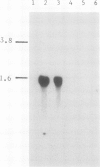Abstract
If green light-acclimated Fremyella diplosiphon cultures are transferred to red light, the transcription from the inducible phycocyanin gene set increases at least 30-fold within 60 minutes. This effect is inhibited completely by the protein synthesis inhibitors chloramphenicol and spectinomycin. Application of chloramphenicol 30 minutes after transfer of cultures to inductive red light prevents further phycocyanin mRNA accumulation within 10 minutes. If red light-acclimated cells are transferred to green light, the phycocyanin transcript level declines by about 70% within 1 hour. Most of the green light-dependent decline results from the rapid cessation of transcription from the PC gene set. Chloramphenicol slows the decline to some extent by decreasing the rate of mRNA degradation in a light-independent manner. The accumulation of phycoerythrin mRNA after transfer of red light-acclimated cells to green light is also inhibited by chloramphenicol. However, there is no red light-dependent mechanism that rapidly halts phycoerythin mRNA synthesis after transfer of cultures from green to red light. Therefore, at least three light-dependent processes are involved in regulating phycobiliproteingene expression: chloramphenicol-sensitive processes required for the activation of phycocyanin and phycoerythrin gene sets and a chloramphenicol-insensitive process which blocks phycocyanin mRNA synthesis after transfer of cells from red to green light.
Full text
PDF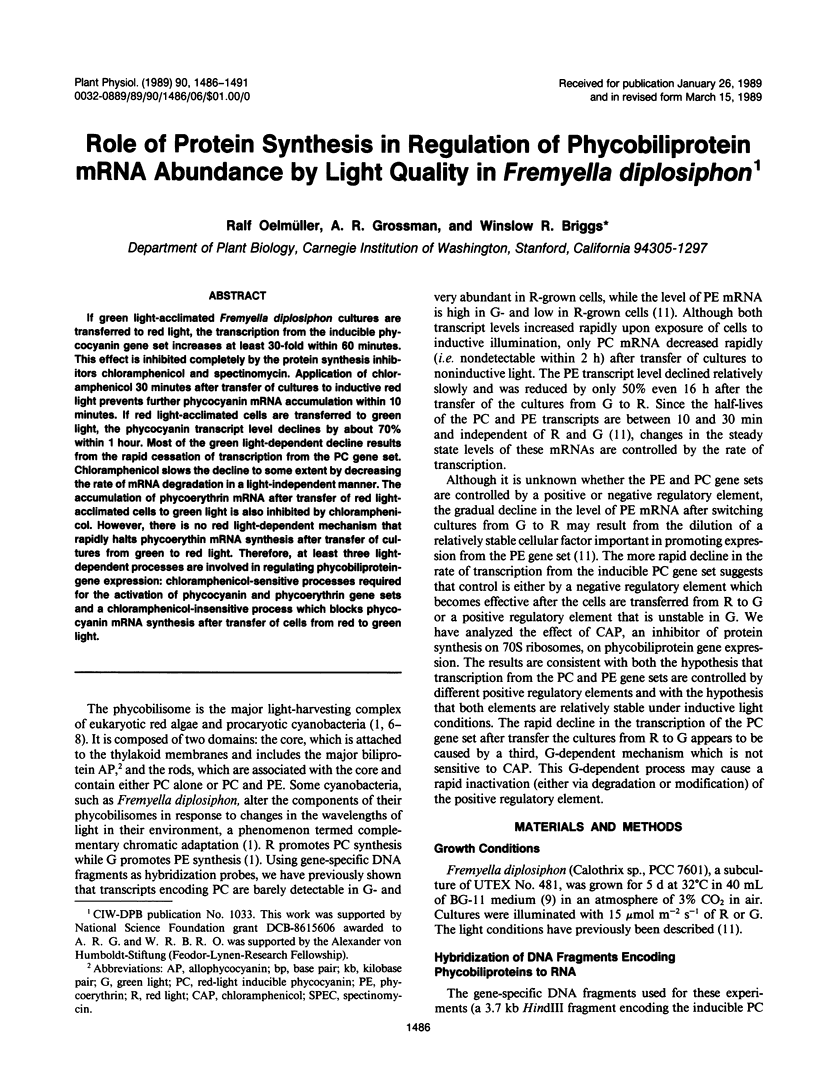
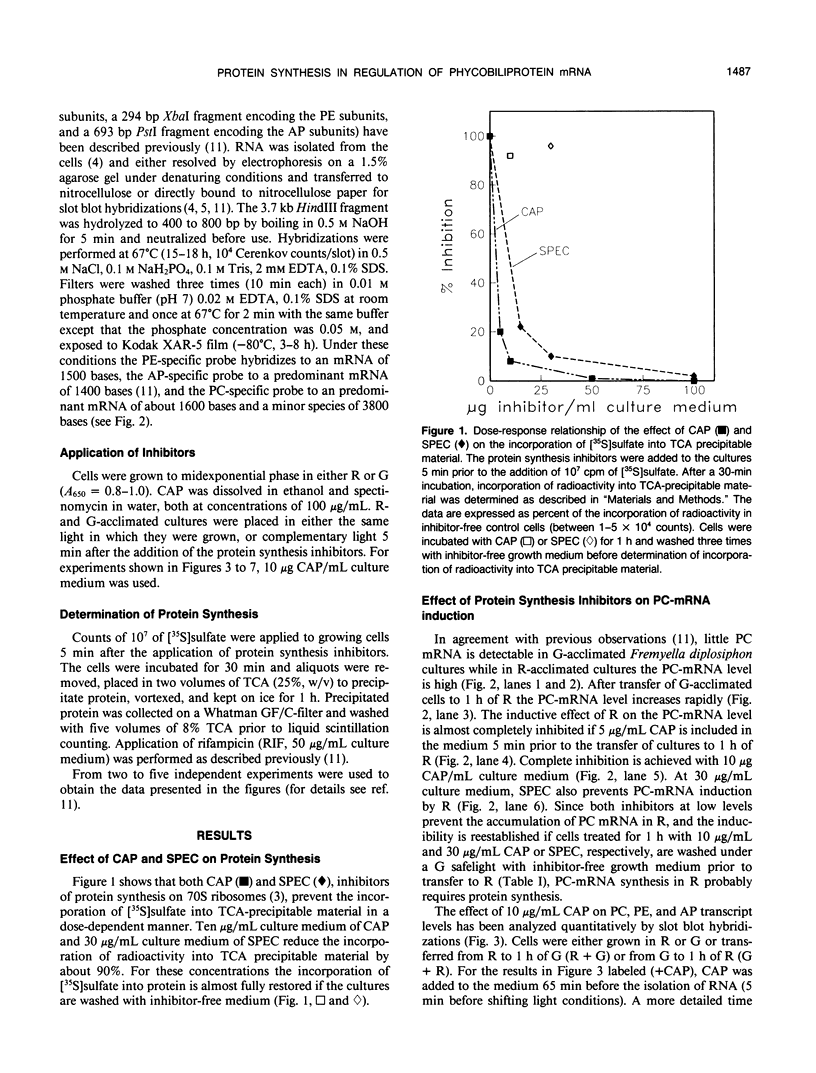
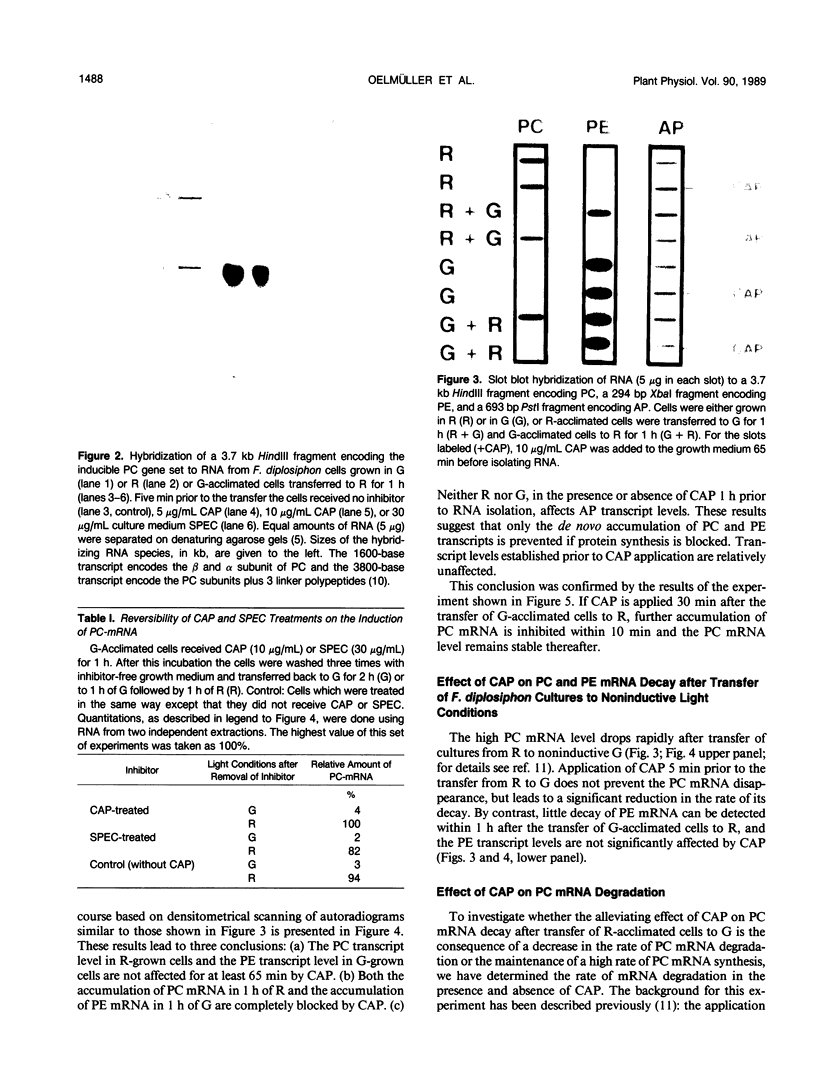
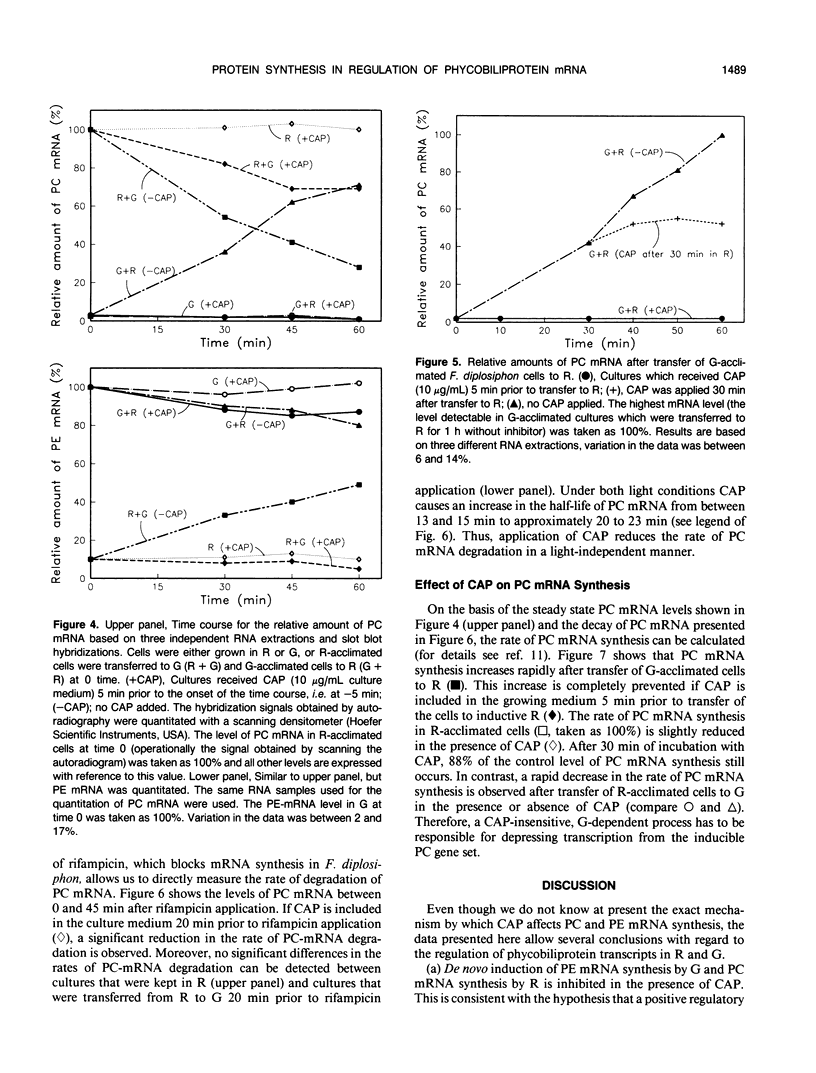
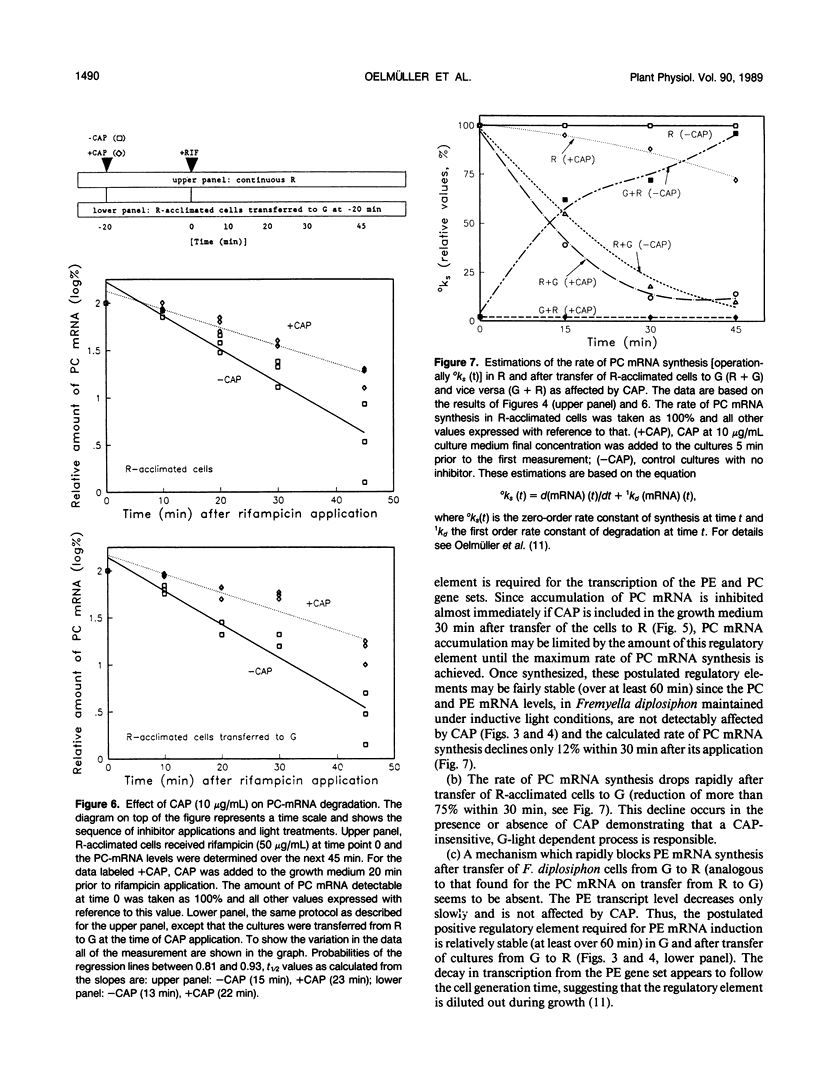
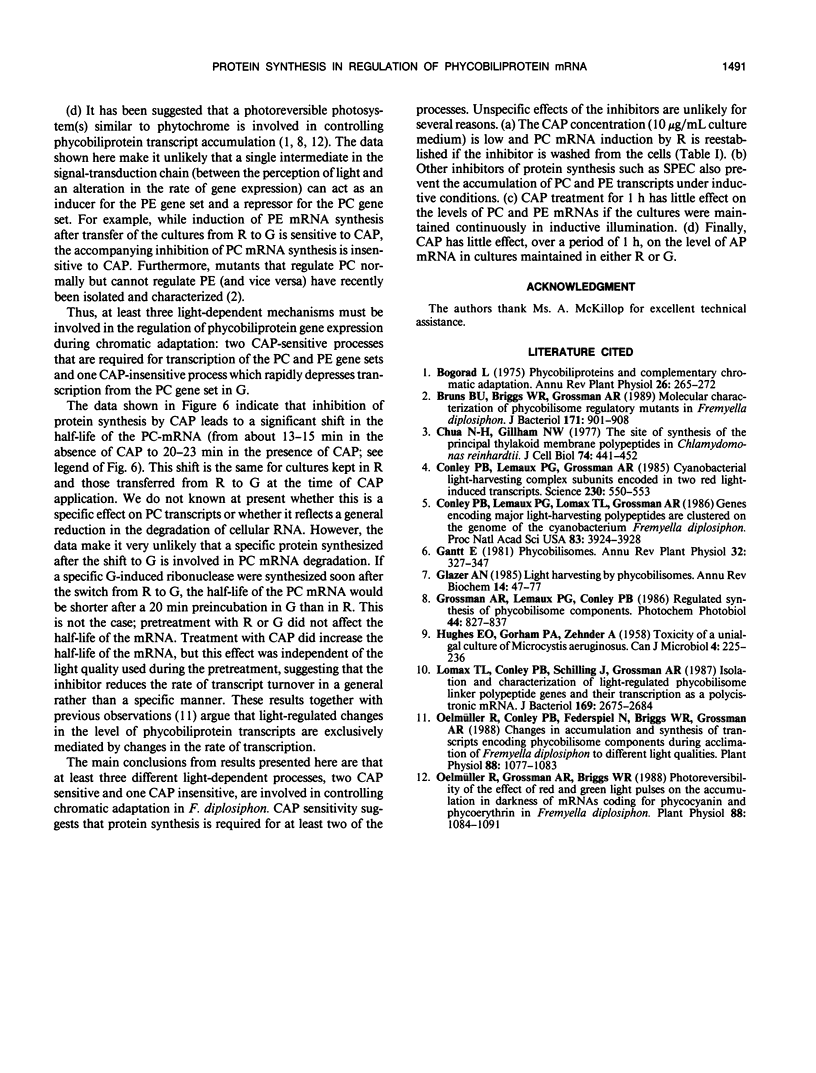
Images in this article
Selected References
These references are in PubMed. This may not be the complete list of references from this article.
- Bruns B. U., Briggs W. R., Grossman A. R. Molecular characterization of phycobilisome regulatory mutants of Fremyella diplosiphon. J Bacteriol. 1989 Feb;171(2):901–908. doi: 10.1128/jb.171.2.901-908.1989. [DOI] [PMC free article] [PubMed] [Google Scholar]
- Chua N. H., Gillham N. W. The sites of synthesis of the principal thylakoid membrane polypeptides in Chlamydomonas reinhardtii. J Cell Biol. 1977 Aug;74(2):441–452. doi: 10.1083/jcb.74.2.441. [DOI] [PMC free article] [PubMed] [Google Scholar]
- Conley P. B., Lemaux P. G., Grossman A. R. Cyanobacterial light-harvesting complex subunits encoded in two red light-induced transcripts. Science. 1985 Nov 1;230(4725):550–553. doi: 10.1126/science.3931221. [DOI] [PubMed] [Google Scholar]
- Conley P. B., Lemaux P. G., Lomax T. L., Grossman A. R. Genes encoding major light-harvesting polypeptides are clustered on the genome of the cyanobacterium Fremyella diplosiphon. Proc Natl Acad Sci U S A. 1986 Jun;83(11):3924–3928. doi: 10.1073/pnas.83.11.3924. [DOI] [PMC free article] [PubMed] [Google Scholar]
- Glazer A. N. Light harvesting by phycobilisomes. Annu Rev Biophys Biophys Chem. 1985;14:47–77. doi: 10.1146/annurev.bb.14.060185.000403. [DOI] [PubMed] [Google Scholar]
- Grossman A. R., Lemaux P. G., Conley P. B. Regulated synthesis of phycobilisome components. Photochem Photobiol. 1986 Dec;44(6):827–837. doi: 10.1111/j.1751-1097.1986.tb05543.x. [DOI] [PubMed] [Google Scholar]
- HUGHES E. O., GORHAM P. R., ZEHNDER A. Toxicity of a unialgal culture of Microcystis aeruginosa. Can J Microbiol. 1958 Jun;4(3):225–236. doi: 10.1139/m58-024. [DOI] [PubMed] [Google Scholar]
- Lomax T. L., Conley P. B., Schilling J., Grossman A. R. Isolation and characterization of light-regulated phycobilisome linker polypeptide genes and their transcription as a polycistronic mRNA. J Bacteriol. 1987 Jun;169(6):2675–2684. doi: 10.1128/jb.169.6.2675-2684.1987. [DOI] [PMC free article] [PubMed] [Google Scholar]
- Oelmüller R., Conley P. B., Federspiel N., Briggs W. R., Grossman A. R. Changes in Accumulation and Synthesis of Transcripts Encoding Phycobilisome Components during Acclimation of Fremyella diplosiphon to Different Light Qualities. Plant Physiol. 1988 Dec;88(4):1077–1083. doi: 10.1104/pp.88.4.1077. [DOI] [PMC free article] [PubMed] [Google Scholar]
- Oelmüller R., Grossman A. R., Briggs W. R. Photoreversibility of the Effect of Red and Green Light Pulses on the Accumulation in Darkness of mRNAs Coding for Phycocyanin and Phycoerythrin in Fremyella diplosiphon. Plant Physiol. 1988 Dec;88(4):1084–1091. doi: 10.1104/pp.88.4.1084. [DOI] [PMC free article] [PubMed] [Google Scholar]



